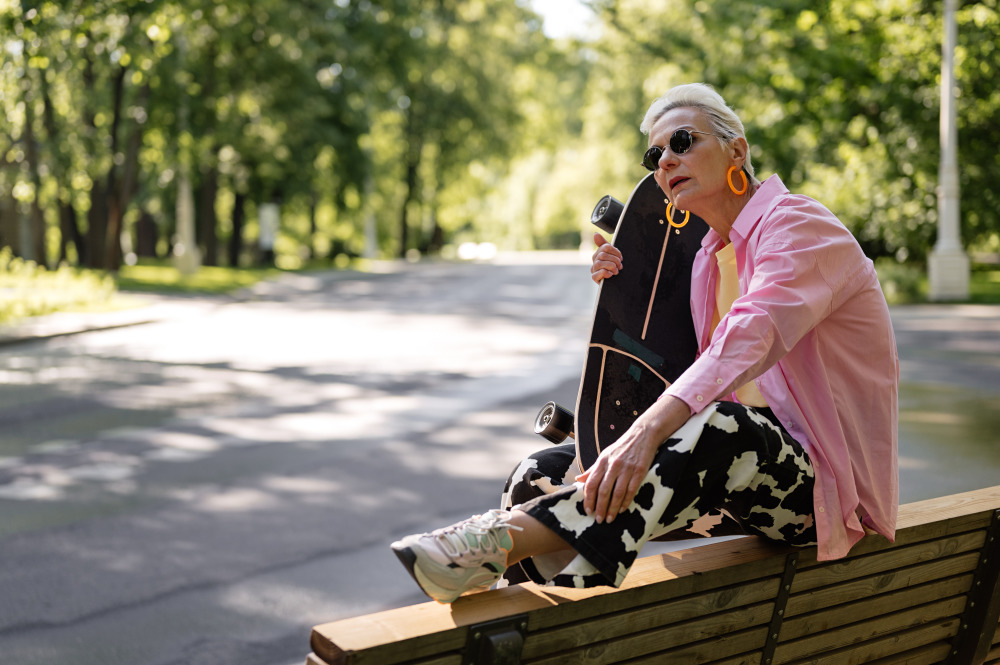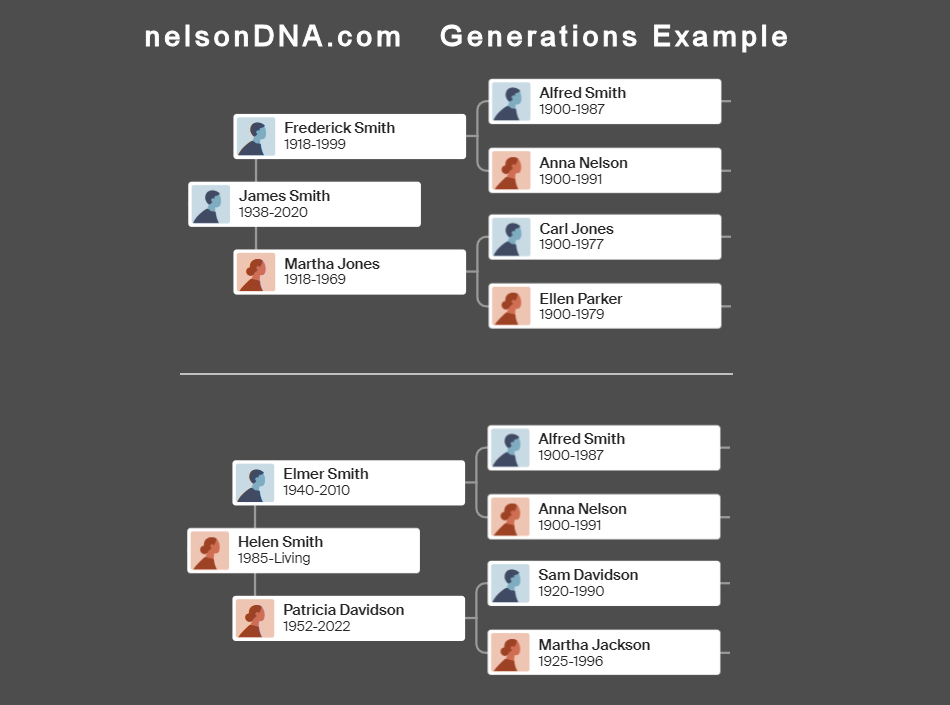WHAT GENERATION AM I IN?
 July 28, 2023
July 28, 2023
As mentioned in my previous post, when figuring out family relationships with DNA, it's not just about the centimorgan numbers. You will need to determine what generation you are in compared to your DNA match. It's not always as easy as you'd think. Most people would say, "Just look at the age of your DNA match. If you are similar ages, you must be in the same generation." This isn't always true and I'll explain why. Looking at a single DNA match or a single generation in a family tree can be quite deceiving. You also need to know where to start. If these are weak DNA matches, you may have to go back many generations and find the common ancestor and work backwards and count the generations. It can get overwhelming. Let's keep it simple and look at an example involving only three generations so you can see what I'm talking about...
If you were born in 1983 and you had two DNA matches that you were looking at and all you knew about them was their ages, you could make some really bad assumptions. Let's say one DNA match, named Helen, was born in 1985, and another DNA match, named James, was born in 1938. It seems pretty obvious, right? You and Helen are in the same generation, and James is at least a generation older, maybe he's even two generations older. Well, in this example, you'd be completely wrong. Take a look at the image below and I'll explain what's going on here.

Notice that Helen and James have two grandparents in common. They are first cousins. Take a look at their birth years. There's a forty-seven year age gap between them. As crazy as that might seem, I see this happen quite often. This is not an exaggerated example. A hundred years ago, having ten or twelve children was not uncommon for women. I've seen hundreds of family trees that contained large families like that. It was not uncommon for the oldest child to be twenty years or more older than the youngest child. The oldest child might start having children of their own before the youngest child was even born. As you can see, this causes confusion with the generations.
In this example, Alfred and Anna had their first child Frederick when Anna was eighteen years old. Maybe she had many more children over the years and by the time her last child, Elmer, was born she was forty years old. Elmer married a younger woman who had a child, Helen, when she was in her thirties. Frederick and his wife, had a child, James, when they were twenty years old. As you can see, in just a couple generations, a huge age gap was created. Imagine if we were dealing with a weak DNA match and had to go further back. What if this same type of thing happened in the previous generation as well. You could end up with two people in the same generation with a more than sixty year age difference.
Let's say the two trees above are the trees of your DNA matches, and you have about a 1000cM DNA match to both of them. As mentioned in my previous post, a 1000cM match to someone in the same generation as you should be a full first cousin. Remember, you can only be a first cousin if you're in the same generation as your DNA match. That cM number would be too high for a removed cousin. What would the relationship be if you were a generation younger than Helen and James? Those DNA matches would be a half aunt and uncle.
So, as you can see, if you were to look at only one of these DNA matches, James, you would think he must be a half uncle. He's got to be in an older generation, right? When you include Helen in your analysis, it all changes though. Maybe you could be a first cousin to both James and Helen. So what do you do next? Well, in this simple example, we know that James and Helen have to have the same relationship to you. They are first cousins to each other and they have a similar cM number match to you. They cannot both be a half aunt and uncle to you because they are not bother and sister. Sorry if that's a little confusing. You, James and Helen should all be first cousins. Don't worry too much about the relationship for now. My point here is that generations can be confusing, so be careful.
SHARED DNA MATCHING
As things start to get more and more complex, and your DNA matches have a wide variety of centimorgans in common with you, the next step is to use Shared Matching. This is a feature that's very important on genealogy sites. It basically allows you to see who everyone on your match list matches up with. This can come in handy when dealing with generational problems like the one shown here. In this case, if James and Helen didn't have family trees made, shared matching would help you see that they are related to the same families and could help you understand that they are in the same generation despite their large age difference. We'll get more into this subject later.
Just keep an open mind about generations. Don't simply assume you're in the same generation as someone because they have a similar age. Sometimes it's true, but it may require more investigation to be sure. There's other situations that can cause confusion as well. For example, if a man has a child with a much younger woman, and also has children with a woman his own age. More confusion could result. As always, investigate thoroughly to make sure you get those relationships correct.
My next post is a story about researching the birth parents of a foundling.

